Once very easily sighted, many animals and birds vanished from everywhere without notice of most of the common people in India. One such bird is the Vultures. Few years back vultures were one of the common bird in the urban india, cleaning the carcasses around cities. No one ever bothered to think about them. They were seen in the tall trees and in the wastelands in the heart of the cities. But without much of notice, these urban friendly birds disappeared so quickly that people never got a chance to even realize. It is a shocking story for anyone living in India that these large and ugly looking(that’s how it is considered in culture) birds are on the brink of extinction and very soon it may become impossible to save the very few left.
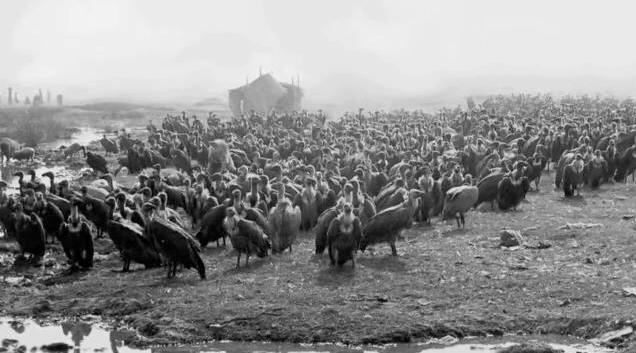
Indian Vultures were considered the most common large bird of prey in the world in 80s and early 90s and they were found in millions
To start this tragic story of the vultures, we don’t have to look back much far. The vulture story is one of the latest event in human history like those in medieval world where some species faced extinction within a span of few years due to human activities. In 1980s, the vultures were found in millions in India, usually in group of hundreds. It was probbaly the most common large bird of prey in the world at that time. Even in early 90s they were found almost everywhere and adapted well to the urban environment of India. No one could imagine at that moment that there is any danger to this species.
The vulture crisis started only in mid 90s, when news of mass vulture deaths were reported in the local news frequently. The news reported deaths of hundreds of vultures in single instances, where they were found just found dead in a span of few square meters. They were lying on grounds, hanging from trees, nests and in all possible posture. Initially it was thought to be as some poisonous drug in the carcasses they eat and taken lightly. Those incidents happening across all the zones in India were believed to be independent of each other. As news were reported almost daily from one place or the another, scientists took some initiatives but they were just mystified. For years these news took important place in the news media but slowly declined. The common people realized probably the death are reducing, but in reality, the groups of vultures started declining catastrophically from everywhere, so the death numbers of the vultures, to be able to find a place in the news media.
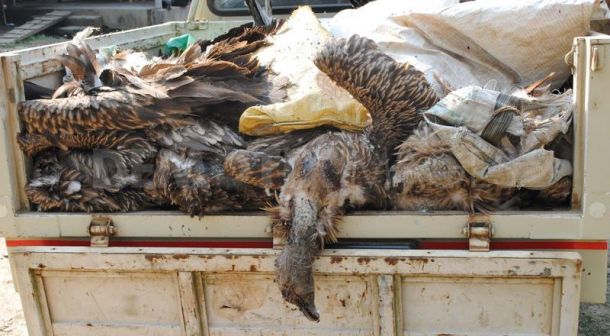
In the last decade dead Vultures were carried away like this in tens-hundreds in India. They were found dead everywhere, hanging from trees, in the nests or lying on the ground!
For more than a decade, these large birds faced deaths without a known reason to the scientists. It was as late as 2004, when scientists in the United States identified the cause: the drug Diclofenac. Diclofenac, an anti-inflammatory agent, has been deployed successfully in human medicine for decades. In most EU countries medication containing Diclofenac is only approved for treatment of humans. In India, Pakistan and Nepal it has been deployed in veterinary medicine as well since the 90s, in particular for livestock. When vultures feed on cattle carcasses, they too ingest the drug. The drug acts as a fatal poison to the vultures and they die from kidney failure.
Though the cause was discovered in 2004, it took the government in India and also Pakistan, Nepal two years to banned the medicine. In May 2006, the medicine was banned, but by that time almost 97% of the total vulture population was wiped out.
The medicine was banned, but due to other obvious reasons like habitat loss, etc. the vulture populations kept on declining in the Indian subcontinent. Now it is estimated that almost 99% of the vulture population vanished from nature in just 15 years.
Indian subcontinent is home to three vulture species, Slender-billed Vulture, Indian Vulture and Indian White-rumped Vulture. Currently only less than thousand individuals are believed to be alived from each species! They are now restricted to very small pockets in the country. The white-rumped Vulture weighs 3.5-7.5 kg (7.7-16.5 lbs), measures 89-93 cm (30-37 in) in length, and has a wingspan of about 260 cm (8.6 ft). Slender-billed and Indian Vultures weigh between 5.5 and 6.3 kg (12-13.9 lbs) and measuring 80-100 cm (32-40 in) long and 205 to 229 cm (81-91 in) across the wings.
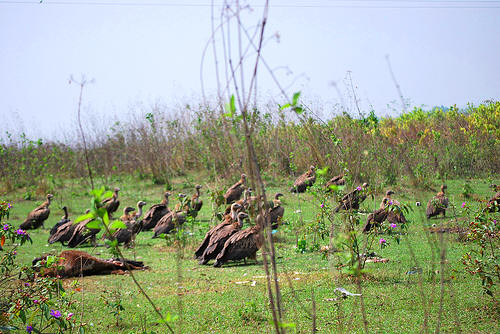
Vultures are now found in small pockets in Indian subcontitent, with a total population of around a thousand - courtesy misiku1@flickr
The RSPB (BirdLife in the UK) and Bombay Natural History Society (BNHS, BirdLife in India) are pioneers in creating awareness on this crtically endangered bird. They have set up vulture breeding centres in northern India, West Bengal, Assam and also have been working on a campaign “Saving Asia’s Vultures from Extinction (SAVE)” across all three countries, India, Nepal and Pakistan. Some government initiatives have been also started and many centers across the country are opened in recent years. SAVE which is in place for more than five years now is the last hope for the vultures.
SAVE’s breeding program has contributed a lot in last few years. In 2008 the program was successful to breed artificially in captivity. But the artificial program is not that efficient, so the scientists looked into artificial hatching in incubators. 2010 brought success in this sector too.
But its unfortunate that there are still some reported news of mass vulture deaths as late as a week from today. On the first week of March, death of 20 vultures were reported at a paddy field in Goalpara district of Assam, North-East India.
Culturally vultures are always considered as symbol of death and something bad in India. They are neglected for thousands of years and just disappearing unnoticed. Species like tiger has got so much important in the country over the few years. But these large birds are simple neglected. Its already very late to bring to give attention to these birds, but if we don’t give them now, it will be too late. Like tiger, being on the top of the eco pyramid, vulture has got very important role in the ecosystem. In fact they are much more imporant than any birds in the human society. They have been keeping our environment clean and hygienic.
If drastic steps are not taken, the vultures may take space from high skies into just books in front of our eyes. In fact the Parsis, whose religion prohibits burying or burning their dead, had to resort to technology such as solar reflectors to hasten decomposition of corpses already. The vultures used to dispose of human remains set out for them on sacrificial “towers of silence” by adherents of the ancient Parsi religion till few years back.
Will you step up to save these poor large birds?



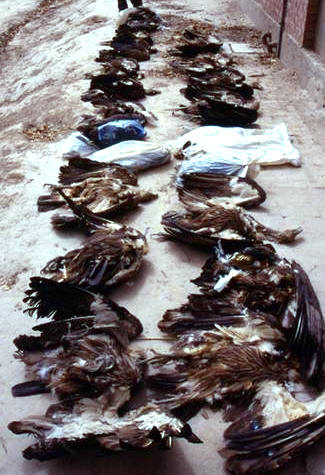
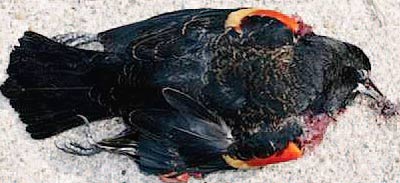



Recent Comments